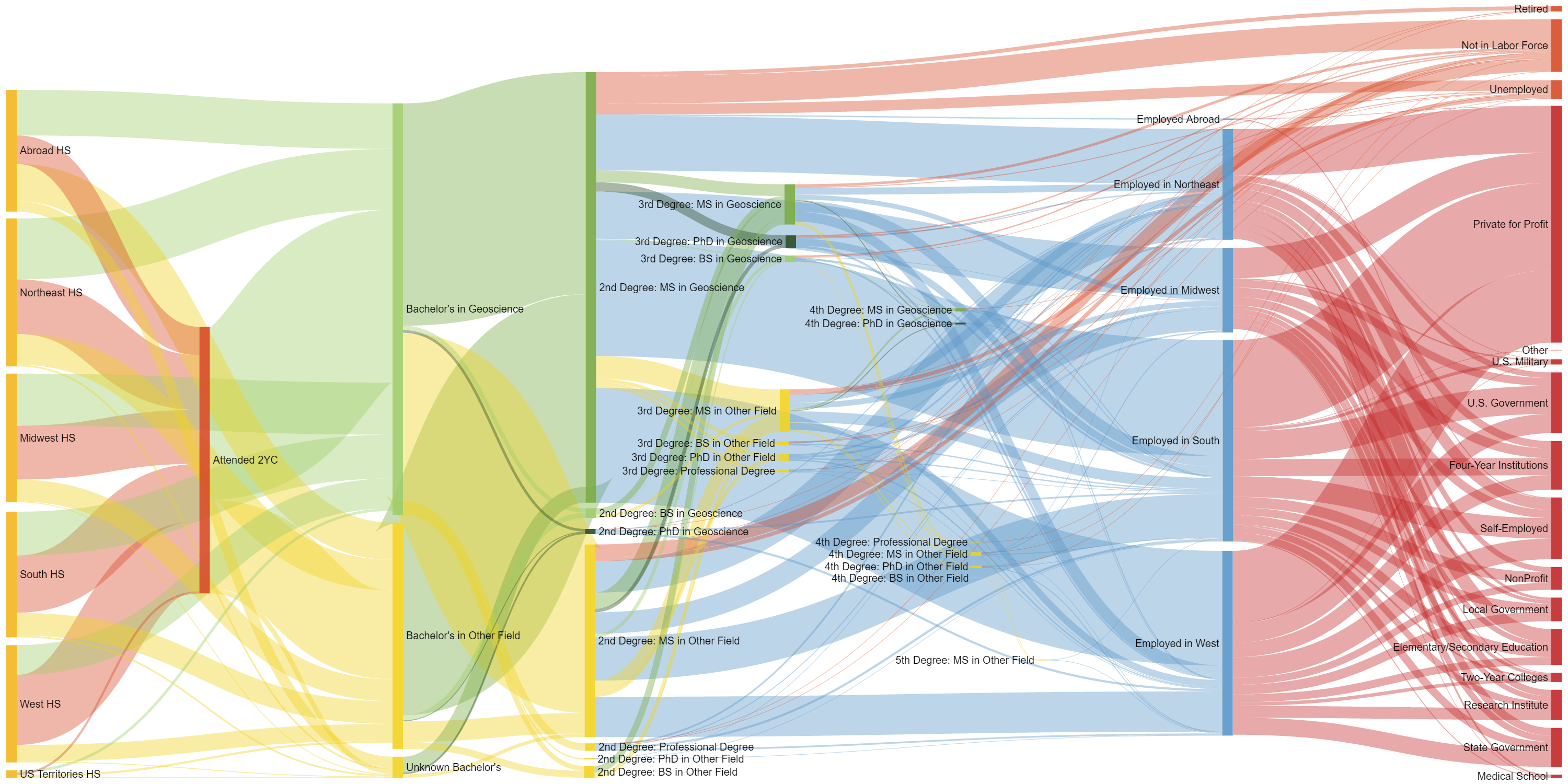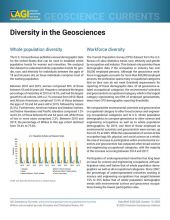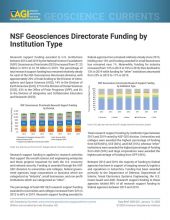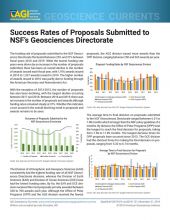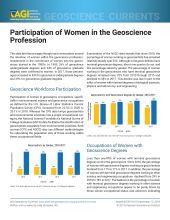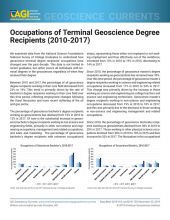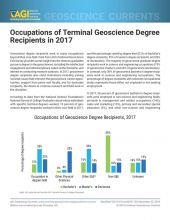The figure below is a Sankey diagram, a flow diagram in which populations are shown proportionally along the flow paths. This visualization shows the educational paths of the current geoscience workforce, from high school location to their primary job industry, using the National Science Foundation’s Survey of College Graduates 2013 data. The nodes (darker vertical lines) display the relative number of geoscientists in each position in their educational path and primary job position. The ribbons show the flow of geoscientists through the nodes. The data were sorted to include anyone with a graduate degree that also has at least one degree in the geosciences. It includes responses from geoscientists that received degrees from 1956 to 2013, which accounts for those that were retired or not in the labor force in 2013. Also the diagram does not account for secondary jobs held by geoscientists. Therefore, this diagram is focused on mapping the educational progression of geoscientists rather than their career progression.
Educational pathways of geoscience graduates with at least one graduate degree. Source: AGI's Geoscience Workforce Program.
The diagram was created to address a few frequently asked questions. For example, there has been some speculation that there might be regional differences (http://www2.census.gov/geo/pdfs/maps-data/maps/reference/us_regdiv.pdf) in the location of high schools of geoscientists due to variations in exposure to earth science in high school. However there appeared to be a relatively equal distribution of geoscientists out of high schools from each U.S. region, which indicates potential regional sourcing when normalized for total populations. Most primary job locations tend to be in the South and the West. A few individuals earned as many as five postsecondary degrees throughout their education, but the majority of individuals completed a master’s degree in the geosciences before permanently entering the workforce. This diagram also indicates the potential attrition from the geosciences through the flow of geoscience bachelor’s graduates into non-geoscience graduate degree(s) and then out into the workforce. While it is possible that these individuals found a primary job in the geosciences, it is more likely their primary job is related to their graduate degree.
While complicated, this effectively visualizes the flow of the education paths of geoscientists and can be a tool to address questions related to the education and careers of geoscientists.


